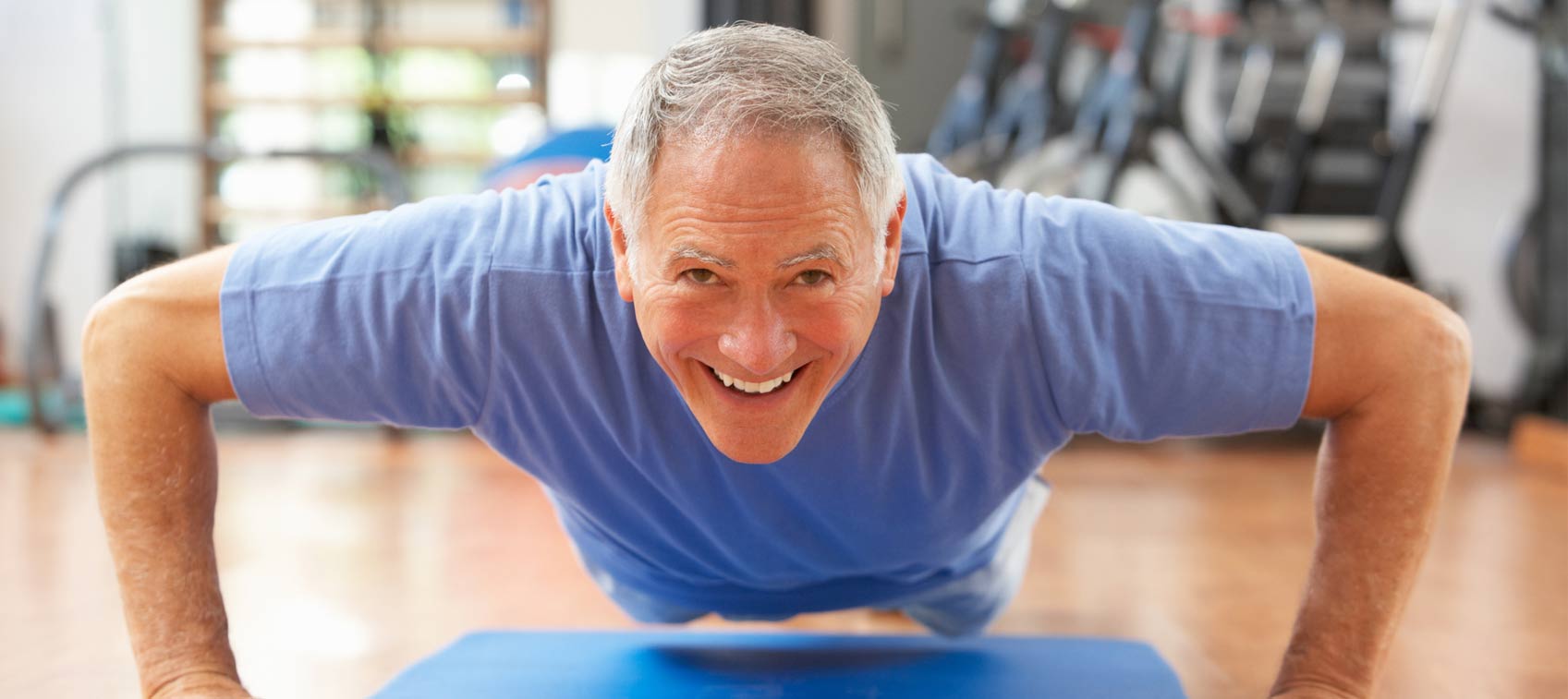
What is your greatest fear about getting older? For most seniors it isn’t illness, chronic pain, or even death—only 3 percent of respondents to a survey on aging cited death as their leading concern. The biggest fear is loss of independence.
It’s a valid worry. A million and a half Americans reside in nursing homes, and tens of millions more depend on others for help with activities of daily living. Memory problems, physical disabilities, and chronic disease rob many people of their independence, but there’s another common culprit that can lead to extreme weakness, limited mobility, increased risk of falls, difficulties with self-care, and premature death: age-related muscle loss.
Muscle Loss With Aging
Some muscle loss is inevitable as we get older. Changes in protein synthesis, hormone levels, and nerve and muscle cell function decrease total muscle mass by 0.5–1 percent per year, beginning as early as age 30. You may not notice it at first, especially if you stay active, because it’s gradual and is usually offset by an increase in body fat. But it picks up speed.
Thirty percent of Americans over age 60—and half of those in their 80s and beyond—have significant and progressive muscle loss. This condition is called sarcopenia, literally translated as “vanishing flesh.” Affected individuals often appear thin and frail, but as often as not, they’re overweight. That’s because obesity-associated inactivity, inflammation, insulin resistance, declines in anabolic (muscle-building) hormones, and fat infiltration into the muscles dramatically impair muscle function.
Muscle loss not only hampers physical function and threatens independence, but it also increases risk of death.
How to Build Muscle
The best therapy for building and maintaining muscle is resistance exercise, which includes weightlifting as well as squats, sit-ups, step-ups, lunges, push-ups, and other exercises that require you to “lift” your own body weight. Studies show that for adults of all ages, two or three 30–45 minute sessions per week for 18–20 weeks can add nearly two and a half pounds of lean muscle and increase strength by 25–30 percent.
Benefits are even greater for older, previously inactive people. For example, postmenopausal women who participated in a weightlifting program twice a week for a year had an 80 percent average improvement in strength. And after 10 weeks of simple leg resistance exercises, nursing home residents—most of whom used a cane, walker, or wheelchair—were 113 percent stronger and could walk, climb stairs, stand, and sit more easily.
Prevent Muscle Loss With Protein
Your body also needs a steady supply of amino acids for protein synthesis and muscle growth, so you need to fuel up on protein throughout the day. The optimal amount of dietary protein is 25–30 grams—the amount in about four ounces of beef, poultry, or fish—three times a day. Much more than that is overkill. In one study, muscle protein synthesis increased by 50 percent after eating four ounces of beef, but 12 ounces of meat provided no additional benefits.
Eat a two-egg (or four-egg white) omelet with a side of turkey sausage for breakfast, tuna salad for lunch, and a small chicken breast with your dinner, and you’re covered. You can also supplement with protein-rich shakes or bars. Health food stores offer lots of choices, but make sure your selection is rich in high-quality protein. Research suggests the amino acid leucine, abundant in milk, meat, fish, and whey protein powder, is particularly helpful for stimulating muscle protein synthesis in older people.
Supplements That Help Prevent Muscle Loss
L-carnitine is an amino acid supplement that improves muscle strength and mobility in older people. In a study of centenarians (100+ years old), those who took 2,000 mg of L-carnitine for six months gained over eight pounds of muscle and lost four pounds of fat. They had improvements in endurance and cognitive function as well.
Vitamin D has direct effects on skeletal muscle function, and deficiencies are associated with weakness and debility. Several studies have demonstrated that supplementation with vitamin D and calcium reduces risk of falls, most significantly in frequent fallers.
Also take a good daily multivitamin and fish oil. Omega-3 fatty acids enhance muscle protein synthesis in older people, and research suggests they play a role in the prevention and treatment of sarcopenia as well.
Do Hormones Prevent Muscle Loss?
There is no question that falling levels of hormones are associated with muscle loss—or that hormone replacement therapy (HRT), particularly with testosterone, growth hormone, DHEA, and other anabolic hormones, can have profoundly positive effects on muscle mass. For optimal safety and efficacy, bioidentical hormone replacement is the way to go.
Another easy and inexpensive way to boost hormone levels that doesn’t require a prescription is DHEA, which is the precursor to other steroid hormones. In studies of older men and women, supplemental DHEA improves body composition, strength, and endurance as well as sexual function and sense of well-being. The usual daily dose of DHEA is 25 mg for women and 50 mg for men. Talk to your doctor about a DHEA-S blood test to keep your level in the optimal range, and do not take DHEA if you have a hormone-related cancer.
You can’t entirely prevent age-related muscle loss, but you can certainly slow it down. And it’s never too late to start.


